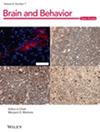Deteriorated Gray Matter Connectome in Diabetic Kidney Disease: A Graph Theory Analysis of Individual-Level Gray Matter Morphological Networks
Abstract
Introduction
Cognitive impairment is frequently observed in patients with diabetes mellitus (DM), and this condition worsens in those with diabetic kidney disease (DKD). However, the precise neural mechanisms involved are still not fully understood. The present study aimed to investigate the topological organization of individual-level gray matter (GM) structural networks in patients with DKD and its association with clinical characteristics.
Methods
Structural magnetic resonance imaging data were collected from 50 DKD patients, 65 DM patients, and 70 healthy controls (HCs). Following data processing, individualized similarity-based GM morphological networks were created. The topological properties of these networks were analyzed using graph theory analysis and compared among the three groups.
Results
Both patient groups showed lower local efficiency and clustering coefficient (Cp) than the HC group, with DKD patients showing a further reduction in Cp compared to DM patients. Additionally, both patient groups showed lower nodal centralities mainly in the frontal regions (including right dorsolateral superior frontal gyrus and bilateral middle frontal gyrus) and left lingual gyrus, while DKD patients exhibited further reductions in these regions compared to DM patients. Nodal centralities of the right dorsolateral superior frontal gyrus and left middle frontal gyrus were associated with kidney function indicators and cognitive performance.
Conclusion
Our study indicates a progressive disruption of the GM structural connectome in patients with DKD compared to those without kidney complications. This disruption may be the underlying neural substrate that leads to more severe cognitive impairment in DKD patients.


 求助内容:
求助内容: 应助结果提醒方式:
应助结果提醒方式:


